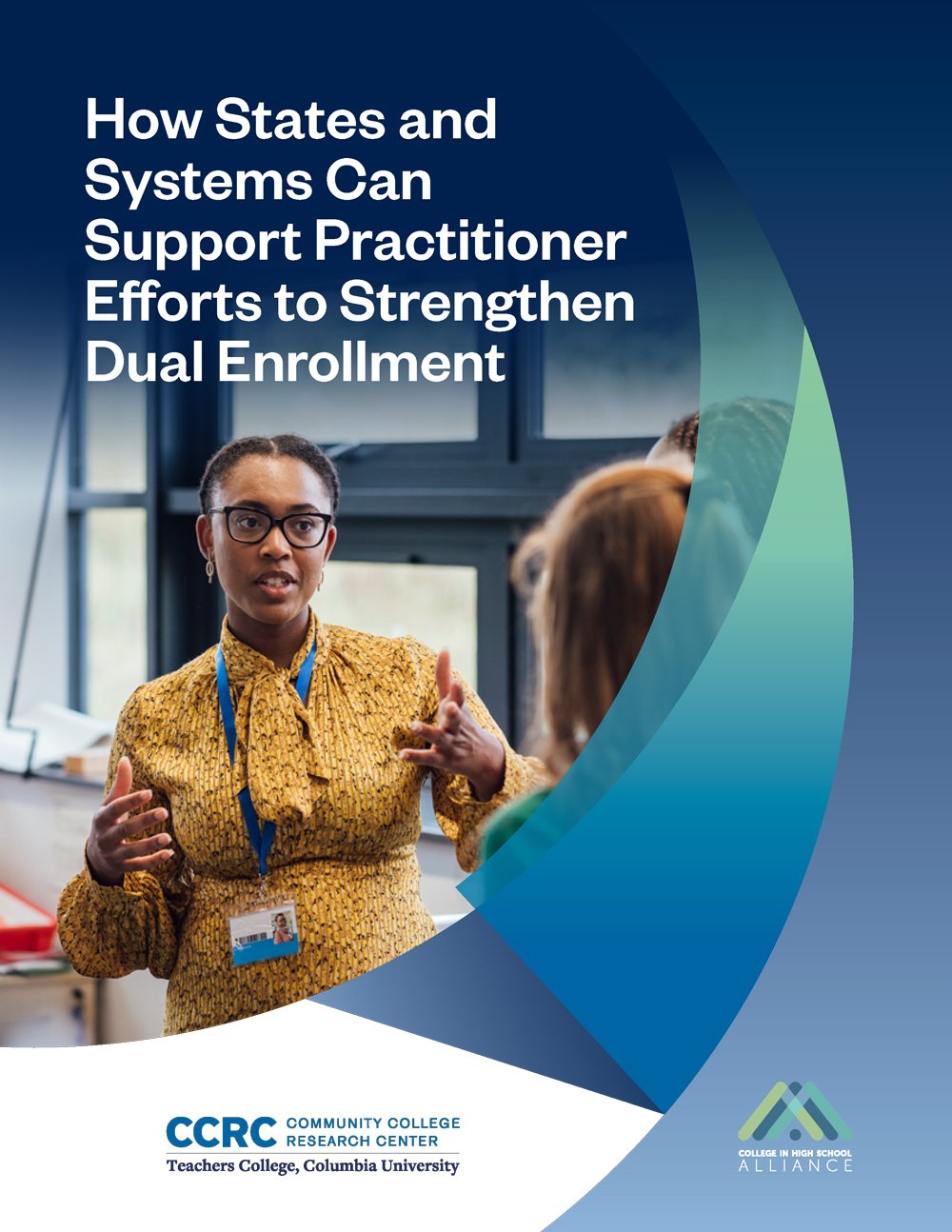
With the expansion of dual enrollment (DE) programs in recent years, researchers have documented how college and K-12 practitioners are reforming DE to focus on broadening its benefits for all students. This report, co-authored with the College in High School Alliance, aims to amplify the work of these practitioners by providing research-based recommendations for states and systems to support practitioner efforts to strengthen dual enrollment. Drawing on findings from interviews with college and K-12 leaders and reformers described in the Aspen Institute and CCRC’s The Dual Enrollment Playbook and in CCRC’s research on Dual Enrollment Equity Pathways (DEEP) practices, the report provides state leaders with recommendations for improving DE programming in ways that support practitioners’ efforts. Recommendations are presented in accordance with the three areas of DE improvement: expanding access, strengthening on-ramps to postsecondary pathways, and building and sustaining strong partnerships. For each recommendation, sample approaches that states across the country have used to aid practitioners in their reform efforts are highlighted. There are six general mechanisms through which these approaches may be undertaken, three that employ formal policy action—legislation, funding, and regulation—and three that do not— guidance, engagement, and resources.
